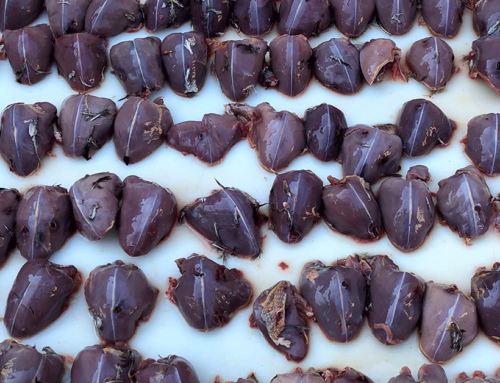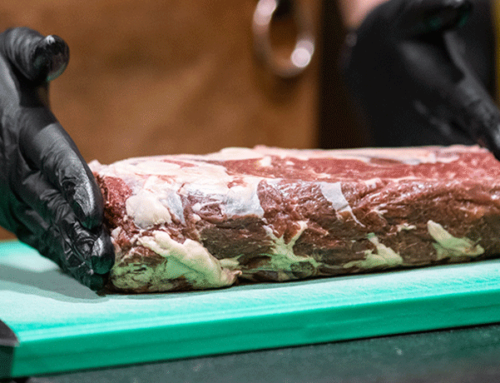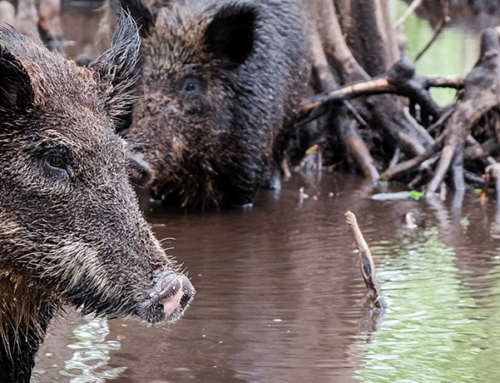To many people
September 1st is just another day in the year. But for hunters, September 1st is a special day. Specifically noon on September 1st. It marks the opening day of the dove season and the unofficial start of the Fall hunting season. For many hunters, this day is looked forward to since the closing day of the last hunting season. It’s the first chance to burn through some shotgun shells in hopes of filling that dove limit. It’s also a great chance to introduce the newcomer or child to the world of hunting. Here are some things to consider

Adam’s Garden of Eatin’ is a participant in the Amazon Services LLC Associates Program, an affiliate advertising program designed to provide a means for sites to earn advertising fees by advertising and linking to Amazon.com
Reality √
If you are new to dove hunting, let me share some of my experiences.
September is brutally hot down south. No way around it. Just prepare for it. Sitting in the middle of a field can be brutal if you’re not mentally & physically ready for it. Pay to play.

Even though it’s hot, I still wear pants. Chances are I’ll down a bird in some thorny brush pile, and have to go find it. This will save me many cuts and scratches. I’d rather trade off the sweat than be cut up and bloodied by the end of the day. Drink plenty of water and don’t have a heat stroke. I’ve dipped out on sacred private dove shoots before because I could feel myself overheating. Really. Please, don’t die just because you needed that last bird.

Gnats & Mosquitos.
Get your bug spray ready.
Or get you a Thermacell. I LOVE mine. I have three models and a camping lantern. It works exceptionally well at keeping biting mosquitoes away.
It goes with me on all my early season hunting activities. Plus you will be looked upon in reverence if you have an extra one to spare for a suffering friend.


Snakes
Snake boots. I highly recommend snake boots. Seriously, they really could save your life. It can be a bit unnerving walking through waist-tall grass, sunflower fields, and brush piles without being able to see where you are stepping. I like to have snake bite insurance while I search for my birds.
Grind
We all know those hunters who just seem to have the golden touch when it comes to everything hunting. Right place, right time, all the time.
Some hunters can go into a field and can have their bird limit faster than I can set up my decoys.
That’s not my luck. EVER.

The majority of my dove hunts end up being all-day grinds, sweating under the September sun.
There have been those epic times when there are so many birds flying, that I couldn’t reload my gun fast enough.
Those are the moments that keep me coming back every season. But those moments are very rare in my hunting world.
I usually have to grind out many slower days to get one of those epic days.
Dove hunting is my enjoyable grind.
Gear
The equipment needed to dove hunt is fairly simple. A shotgun & shells are really the bare minima one would need to bag some dove.
Other gear that can make things a little easier are a comfy stool/bucket, decoys, a wide-brim hat, non-reflective sunglasses, and sunscreen.
Dove Chair/Stool
Some form of comfortable seating will make the long hunts a little more bearable. The standard bucket with a swivel seat top works well for most hunters. The one flaw I have found with the buckets is that the plastic can soften on super hot days under a larger frame person.
Newer models come with all kinds of storage compartments.
If you require comfort above all else, these new dove chairs come with a breathable mesh fabric, drink holders, and a collapsible shade tarp.
Decoys
Dove decoys are a nice addition to have when hunting. Decoys can bring flocks of birds within shooting range, that would have otherwise flown past.
Dove decoys are usually lightweight and easy to transport in and out of the field. There are many varieties of decoys to choose from. I use several varieties myself.
I prefer to have multiple styles of decoys when dove hunting.
Foam
Foam decoys are easy on the wallet, usually come in multiple packs, and easily clip onto the surrounding vegetation.
But, the foam usually isn’t durable and can act oddly on a windy day. The attachment clips are usually cheap clothes pins attached with glue that melts under the brutal sun. I have had to bust out the Gorilla Glue to repair many a decoy.
Foam decoys do not have any movement and movement is a big deal breaker. I just use these decoys as “decorators” around a moving decoy.
Hard Plastic
The hard plastic versions are an upgrade to the foam models. They usually have a more detailed paint scheme that adds to the realism. They have sturdier attachment clips usually made of hard plastic or metal. No worry about these blowing off a tree limb. These usually also come in multiple packs.
The downside is plastic decoys are heavier, more expensive, and lack the movement factor as well.
Motion
It’s incredibly hard to beat a MOJO motion decoy when dove hunting. One or two motion decoys work just as well as dozens and dozens of foam decoys.
It’s my go-to decoy when dove hunting. The flashing white of moving wings brings in dove off the horizon. The wind-powered version is cheaper, but you’re reliant on the wind for the movement. I’ve had too many days of begging for a slight breeze in a dove field, so I get the battery-operated model. A single 9-Volt battery will power this decoy for hours. I have not found a better dove decoy than a MOJO.
Wide-Brim Hat
The sun is relentless and will burn any and all exposed skin, so a wide-brim hat is an invaluable piece of dove gear.
This is my favorite style of wide-brim hat.
I have several styles of this one hat because I love it so much. They work exceptionally well when I’m gardening, camping, or hunting.
They are cheap.
I know I’m going to pour sweat into this thing, so something expensive doesn’t make sense to me. I also won’t be wallet hurt if something happens to it.
They are cooler.
I prefer the mesh design around the top.
Wide brim hats are good at keeping the sun off my face, but most tend to get too hot on my head.
The mesh fabric lets my head breathe. It also comes with a handy drawstring tightener. I don’t use it, but it’s nice to have.
However, there are a couple of things to note. I noticed continual sweating in this hat caused the rivet buttons to rust and fall off, so I couldn’t button the brim out the way when I needed to. I have to use the drawstring now. Not a big deal.
The mesh fabric is wonderful, but it does let in sunlight. If you’re bald, like me, remember to put sunscreen on your entire head before wearing this hat.
A mesh-design sunburn on your head is embarrassing to explain. Ask me how I know.

Sunglasses
This might be the other “most important” piece of dove hunting gear. Staring at the tree line for hours while looking for a black dot on a bright and sunny day, can do a number on your eyes. Make sure you have a good pair of sunglasses. Whatever style you prefer, you’ll be glad you have them. I personally try and stay under the $20 threshold when buying sunglasses, because I am extremely hard on them. It’s not worth the extra $$ to me for a super nice pair. But you do you.
Things to consider
Are you shooting the right choke tube? Improved-cylinder and modified are the recommended chokes for dove hunting.
Full chokes can destroy a dove at close range. I, however, shoot a full choke, and here’s why. Many hunters don’t have enough discipline to wait and pull the trigger. Some people will unload a box of shells before a dove even gets remotely close to kill range. The higher they shoot at birds, the higher the birds fly. So when you’re hunting in a public field, I use a longer choke because Ol’Terry has shot at everything flying and driven all the birds up into the stratosphere. You either shoot at the high birds or don’t shoot at all.
Shot size. 7.5 & 8 shot are the usual shotshell sizes for dove hunting. You don’t want something that is going to obliterate the bird upon impact.
4, 5, & 6 shot are good alternatives as well. They keep their density pattern and have more knock-down power at a longer range.
Look beyond your shot. This applies to any gun shooting. Dove fields can get crowded. The last thing you wanna do is Dick Cheney some poor guy in the face on the other side of the field because you didn’t look where you were aiming.
Eyes and ears people. You’ll only need to get “peppered” once or twice to know the importance of glasses in a crowded dove field.
Know What to Shoot
Any responsible hunter has to know what they are shooting at. Learn what the silhouette of a dove looks like in the air. You only have a second or two to discern whether or not that flying mass is a dove or not. Your lack of knowledge in this area can result in a hefty fine if a wildlife officer decides to show up. And on the opening day of dove season, that’s almost a guarantee. I get it. Mistakes happen. But they should be few and far between when dove hunting. Be better.

Know How to Shoot.
Dove are very hard to hit. They are small, fast, and very acrobatic. It’s very impressive to watch a dove fly through a gauntlet of shotguns and make it out the other side alive.
This is when you have to know how to lead with your shotgun. Leading is just what it says it is. You lead the dove’s flight path with your shotgun barrel.
Dove are fast, so an exaggerated lead is necessary. Aim 6” in front of the dove and then shoot.
1” of shotgun movement equates to roughly 1′ of distance when your targets are flying.
Shoot on flat ground. Sunflower & corn fields are notorious for ruts, divots, and stubby corn stalks. It wouldn’t take much for an off-balance shot to turn into an accident.
Learn to shoot sitting. Many shots happen fast, so practice shooting from a seated position at the range if you can.
Shoulder that gun. It only takes a couple of fast-aiming bicep bruises to learn what this means.
Pick a bird. Choose one bird to aim at from a group. If you just aim at the mass, chances are you will miss everything. Aim small miss small.

Retrieval
A dog makes dove retrieval ALOT easier. Just a fact. Get one and you won’t have to walk as much.
However, if you’re like me, my own two feet are my retrievers, so get to stepping.
If you’re also like me, dove seem to just love landing in the thickest brush, beans, and corn patches around. So when I down a bird, I don’t take my eyes off it.
I watch it fall all the way to the ground. Then I walk a straight line towards it. Seriously. Any distraction, like shooting at another bird, throws off the general area I was originally walking to. A ten-yard misdirection has cost me some downed birds. Who hasn’t walked around in circles before looking for that bird “you just know you hit”?

Don’t be that guy…
Don’t be that guy who sets up 4 ft from another hunter, even if there’s room somewhere else.
Don’t be that guy that shoots at anything and everything. Dove, tweety bird, gnat, fly, satellite, etc….
Don’t be that guy who always claims that every bird is his. If two hunters can’t decide who shot it, just concede it to the other guy. No need for an argument to escalate.
Don’t be that guy who wears a bright white T-shirt and jeans in the middle of a brown dirt cornfield. Granted camo isn’t as vital to dove hunting as it is to deer hunting, but you don’t wanna stand out like a road flare.
Don’t be that guy who doesn’t pick up his shotgun shells. Always pick up your shotgun shells. Respect the land. Especially if you’re on someone else’s property.






























I didn’t even know hunting doves was a thing – showing my ignorance! How do you prepare them for eating – sort of like a Cornish game hen?
Dove hunting is a tradition down South. Glad you asked They’re similar to preparing a quail breast. Next week’s post is on how to fillet a dove breast actually.
I fillet the breast meat off the bone and make my dove popper recipe with them. Recipe post to come as well 😉
I really had no idea about the finer details of dove hunting. Thanks for making a helpful guide!
Thank You!
So much information here and it’s nice that you have compiled it in one place for hunters.
I definitely agree with the “always wearing pants” idea… I’m not trying to get my legs shredded by thorns. lol Great post!
Very interesting!
I just passed this along to the hubbins in time for dove season here in GA. He said thank you!